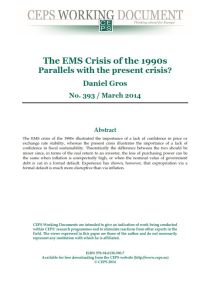Join getAbstract to access the summary!

Join getAbstract to access the summary!
Daniel Gros
The EMS Crisis of the 1990s
Parallels with the Present Crisis?
CEPS, 2014
What's inside?
Was the European economy really different in the days of the deutsche mark, the peseta and the lira?
Recommendation
While its dramatic crisis is long past, the euro zone has yet to return to healthy growth. It’s enough to make you feel nostalgic for the days of the deutsche mark, the lira and the peseta. Yet the 1990s European Monetary System (EMS) crisis offers interesting parallels with current issues and points to valuable lessons for EU policy makers today. getAbstract recommends this thoughtful reminder of how the more things change, the more they stay the same.
Summary
About the Author
Daniel Gros is the director of the Centre for European Policy Studies in Brussels.


























Comment on this summary